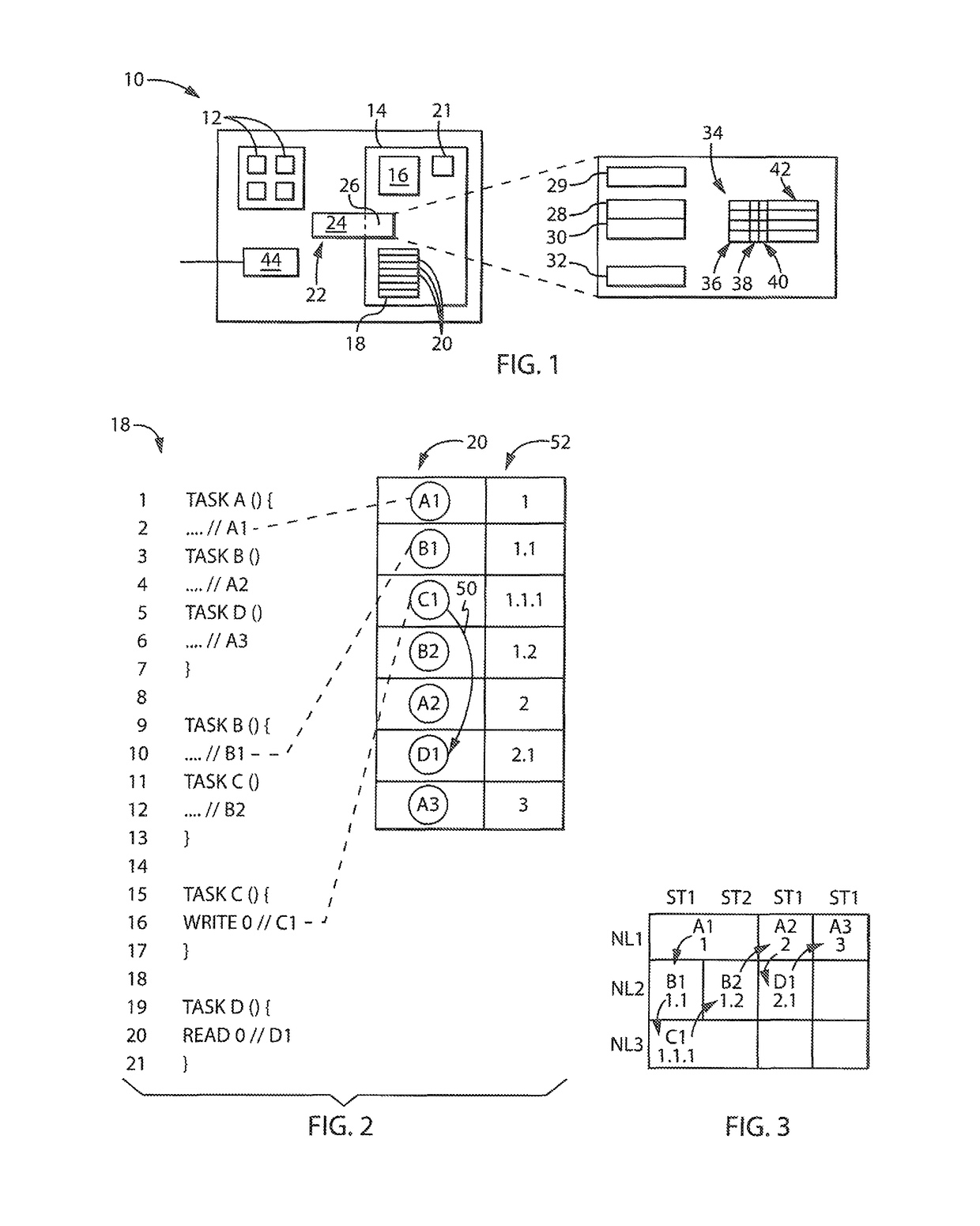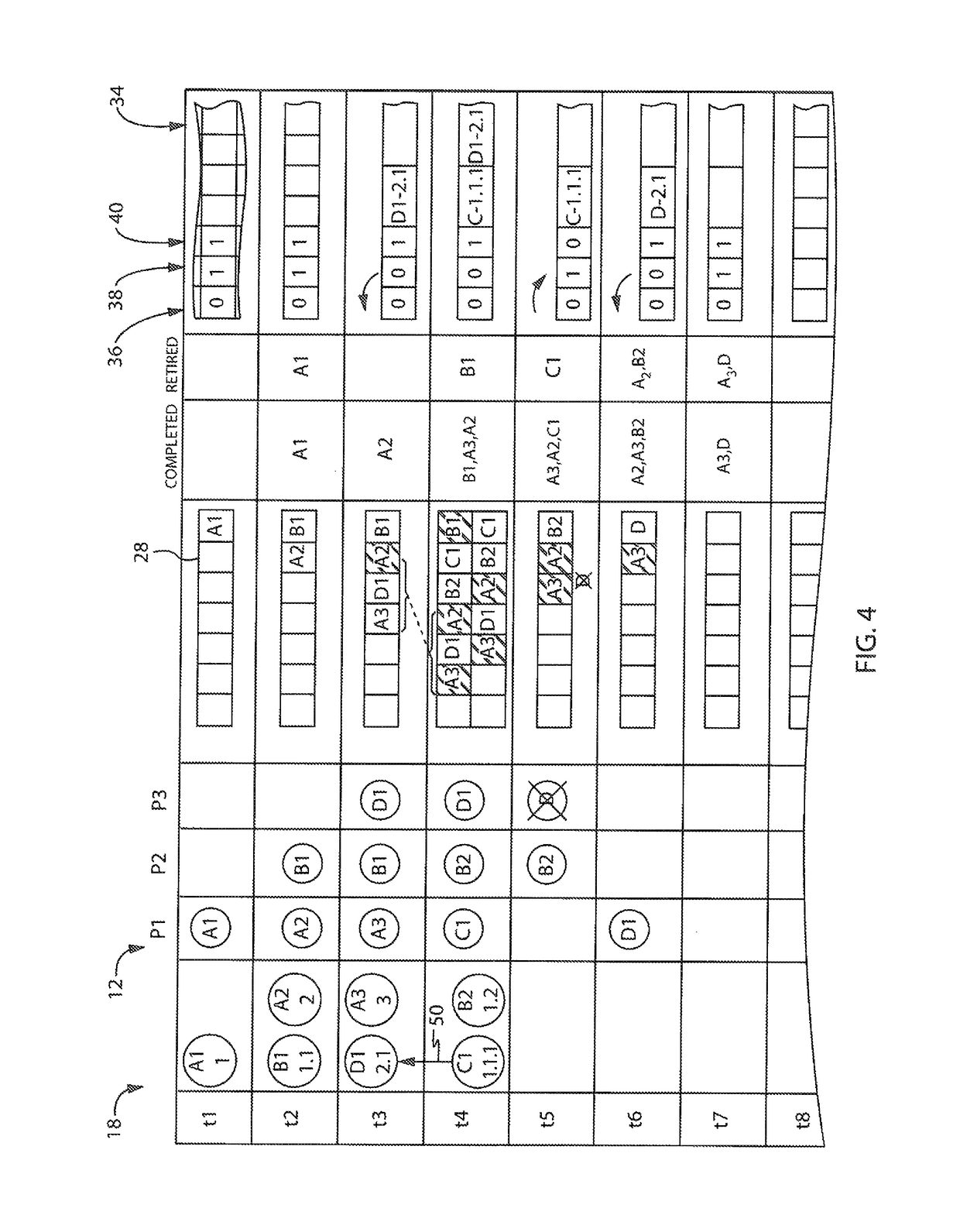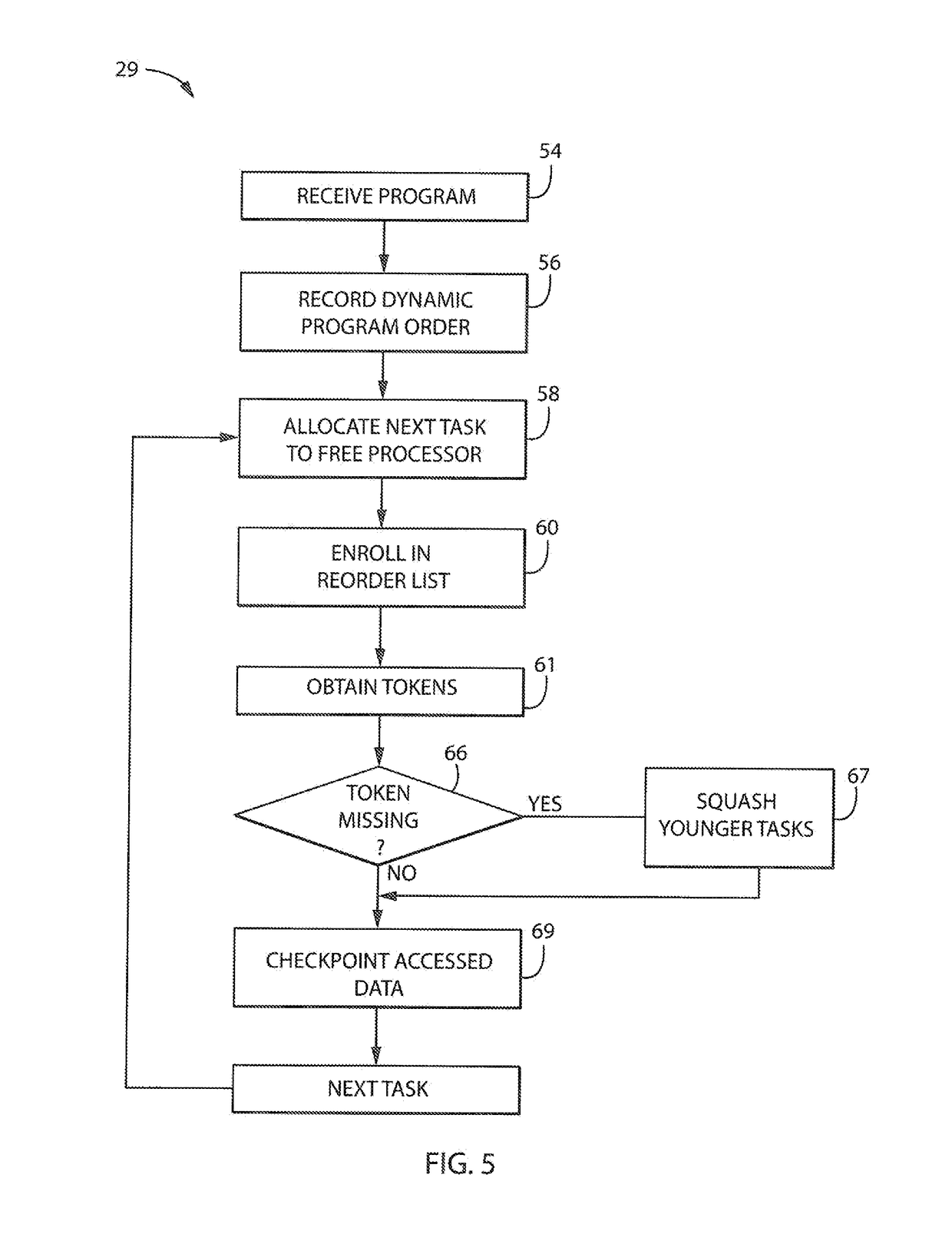Computer architecture for speculative parallel execution
a computer architecture and parallel execution technology, applied in the field of computer architectures, can solve the problems of obscuring the possible independence of the instructions needed for parallel execution, difficult for general programs, and static analysis cannot identify opportunities for parallelization, so as to improve the utilization of processors and reduce later data dependencies
- Summary
- Abstract
- Description
- Claims
- Application Information
AI Technical Summary
Benefits of technology
Problems solved by technology
Method used
Image
Examples
Embodiment Construction
[0039]Referring now to FIG. 1, a multi-processor system 10 may include multiple processors 12 each allowing independent execution of programs. The multiple processors 12 may be full microprocessors, processor cores, or execution contexts of an individual processor or core that allow maintenance of multiple execution states for simultaneous or time-shared execution of programs.
[0040]The processors 12 may communicate with a shared memory 14 intended to represent both local memory structures such as caches, buffers and the like as well as structures such as random access memory and disk drives. Importantly, each of the processors 12 may read and write data in common with the other processors 12.
[0041]The memory 14 may generally include an operating system 16 as well as one or more application programs 18. Each of the application programs 18 may be made up of separate tasks 20 that may be susceptible to parallel execution. The memory 14 may also hold a dataset 21 accessed by application...
PUM
 Login to View More
Login to View More Abstract
Description
Claims
Application Information
 Login to View More
Login to View More - R&D
- Intellectual Property
- Life Sciences
- Materials
- Tech Scout
- Unparalleled Data Quality
- Higher Quality Content
- 60% Fewer Hallucinations
Browse by: Latest US Patents, China's latest patents, Technical Efficacy Thesaurus, Application Domain, Technology Topic, Popular Technical Reports.
© 2025 PatSnap. All rights reserved.Legal|Privacy policy|Modern Slavery Act Transparency Statement|Sitemap|About US| Contact US: help@patsnap.com



